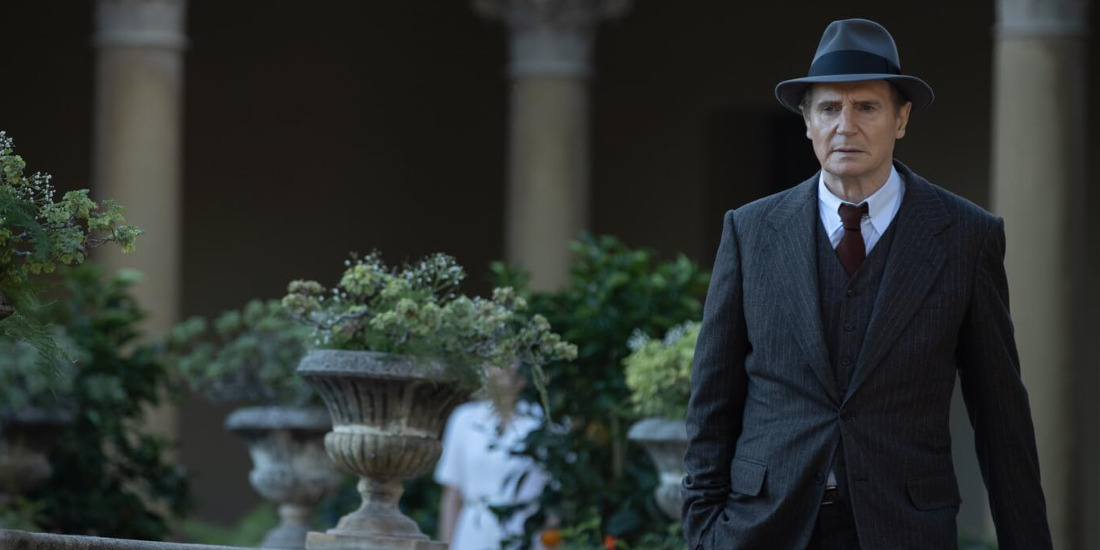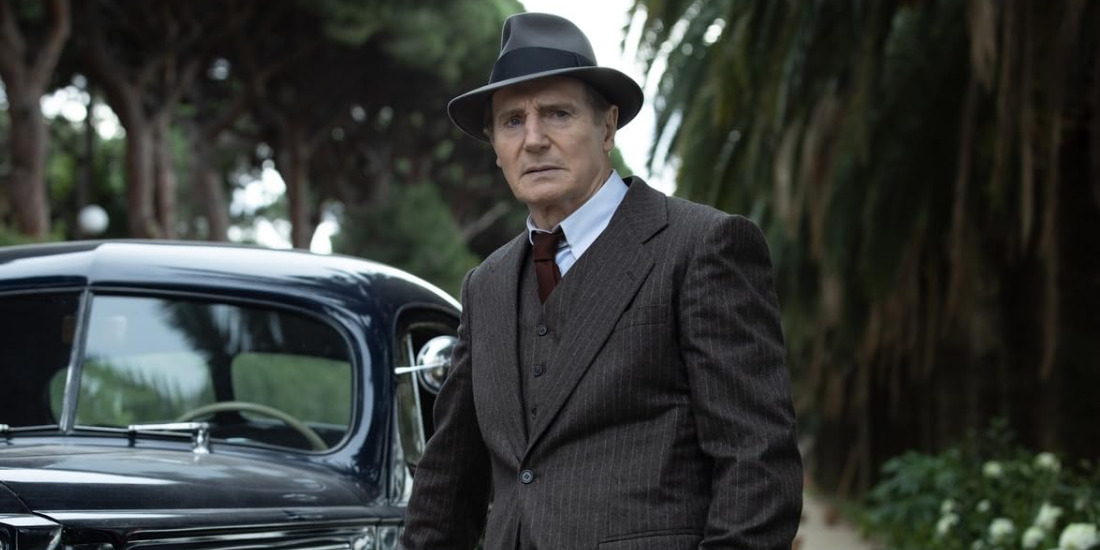Neil Jordan’s ‘Marlowe,’ a mystery crime film, presents a classical Detective story full of enigmatic characters, riddling circumstances, and thrilling plot twists. Liam Neeson’s Philip Marlowe fills in the shoes of the titular protagonist, with his world-weary and witty disposition accompanying the viewers in the plot’s unraveling. In the 1930s, Philip, operating as a private eye, meets a blonde woman, Clare Cavendish, who brings him his latest case: the disappearance of Nico Peterson, whom the authorities have declared dead.
Nevertheless, as Philip digs deeper into Nico’s life and presumed death, he finds himself hurling down a plot consisting of conspiracies and drug lords. Within this modern take on the classic noir detective tale, Philip Marlowe remains an exemplary character to helm the narrative, infusing traditional tropes and traits into the bigger picture. Consequently, viewers are bound to wonder about the origins of Marlowe.
Philip Marlowe: An Iconic Noir Detective From Raymond Chandler’s Works
Even though Philip Marlowe isn’t based on an actual detective, the character holds significant roots in fictional literature and cinema. The Private Eye first found his inception in Raymond Chandler’s 1939 crime-noir novel ‘The Big Sleep,’ which introduced Philip Marlowe’s hard-boiled persona and penchant for mysteries to the world. “Marlowe just grew out of the pulps,” Chandler once said, discussing his character’s emergence. “He was no one person.”

Detective Marlowe exhibited several traits— such as his cynicism, eagerness to quip, and persistent morality— that have come to become stereotypical identifiers of the genre. Nevertheless, numerous similar crime stories still preceded Marlowe’s adventures, with Erle Stanley Gardner— known for his Perry Mason detective series. As a result, Gardner’s writing serves as the inevitable and most prominent inspiration to Chandler.
Chandler had been delving into the crime fiction novel with his short stories published in the Black Mask Magazine— a cornerstone for the hardboiled crime fiction genre— for some time. Yet, it was with Marlowe’s story that the author made the shift to full-length novels. Even so, the writer incorporated his previous detective stories, helmed by Marlowe-adjacent protagonist Mallory, among others, into his later work. Reportedly, the author referred to this process as “cannibalizing.”
Therefore, Chandler’s legacy remains defined by Philip Marlowe and his contribution to the modern perception of hardboiled detectives. Furthermore, even after the author published his last Marlowe novel, other writers such as Robert B. Parker, who completed Chandler’s unfinished final work, ‘Poodle Springs,’ continued penning Marlowe’s adventures in authorized sequels.
Neil Jordan and The Numerous Cinematic Adaptations of Philip Marlowe
Considering the significance of Chandler’s work within the hardboiled crime genre, its cinematic adaptation remained a foregone conclusion. However, the first on-screen adaptation of Chandler’s novels came in the form of ‘The Falcon Takes Over,’ a 1942 film wherein George Sanders’s Gay Lawerence— the titular Falcon— swaps out Detective Marlowe. Eventually, Dick Powell’s ‘Murder, My Sweet,’ officially brought Marlowe’s character to the cinematic world. Therefore, numerous other adaptations followed, including radio shows and television series.

Over the course of the eighty years before Liam Neeson’s Marlowe took center stage in Jordan’s 2023 film, ‘Marlowe,’ several actors— Humphrey Bogart, Robert Mitchum, etc.—have portrayed the character with their films finding origin in Chandler’s original work. However, Neeson’s interpretation of the character distinguishes itself by finding its roots in ‘The Black-Eyed Blonde,’ a 2014 authorized sequel by John Banville, penned under the pseudonym Benjamin Black.
Banville spoke about his interpretation of the classic crime novel, sharing his understanding of the character with the Los Angeles Review of Books, “The essence of [Philip] Marlowe is his loneliness,” said the author. “He’s a completely solitary creature: no family, no friends. No possessions. Lives in an anonymous rented house. All he seems to own is a chess set and a coffee pot. It is, outwardly, at least, a bleak life. But it’s the life he has chosen for himself because he values his freedom.”
For the most part, Neeson stuck to this interpretation of the character— alongside Chandler’s works— to base his performance on. “[No] I didn’t go back,” said the actor in reference to his decision to keep his distance from past on-screen performances of Marlowe. “I took inspiration from the novels. I never got into Chandler’s work at all until I knew I was doing this film. It was beautiful, a real discovery. This extraordinary style of writing. Terrific stories. Complicated but terrific.”
Thus, by introducing Marlowe’s character to the modern audience in a new light, Neeson adds a distinction to the iconic character’s ever-growing IP. As such, his version of Marlowe is both a continuation of and a product of the Detective first introduced in Chandler’s work. Ultimately, Philip Marlowe remains a work of fiction who contributed to the construction of his trademark detective genre.
Read More: Where Was Marlowe (2023) Filmed?


You must be logged in to post a comment.